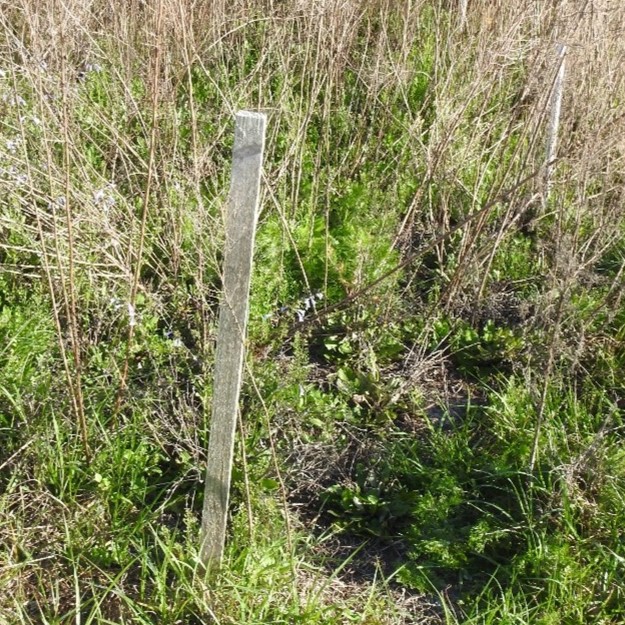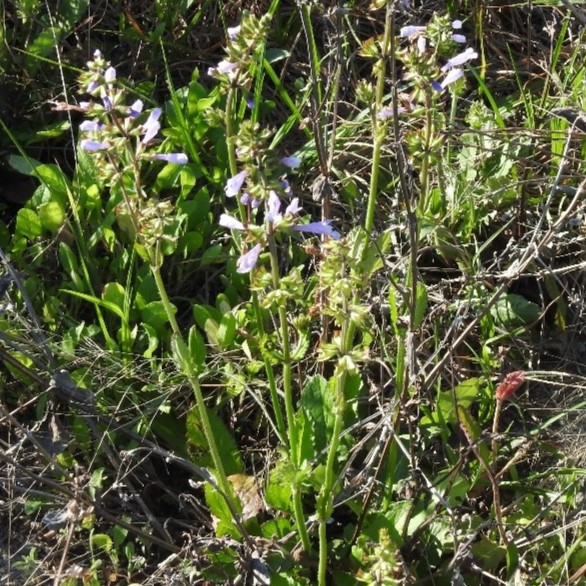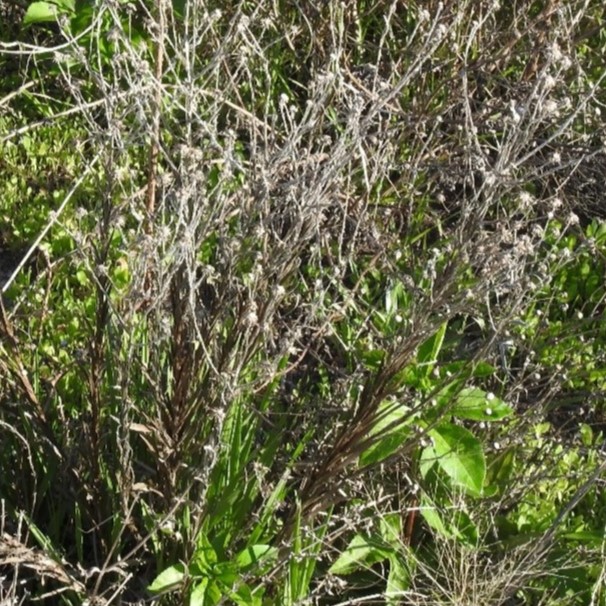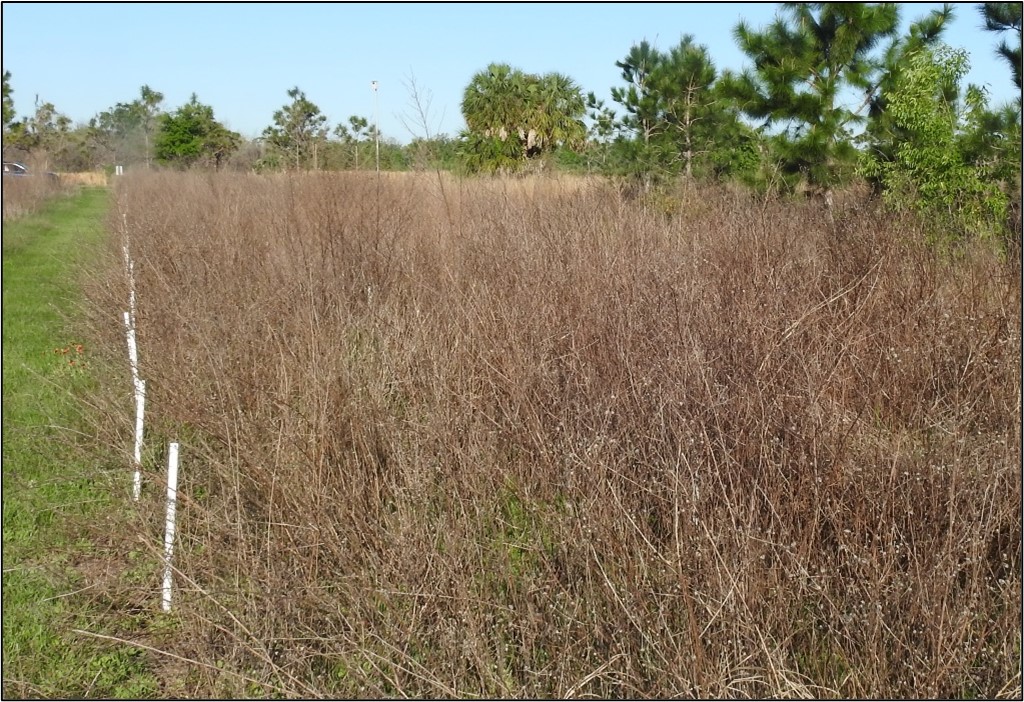Research seeks to identify groundcovers with greater ecological value for roadsides and utilities
Pictured above: Past stems of Canadian horseweed (Erigeron canadensis) proliferating in a research plot. Photo by Jeff Norcini, PhD.
Spring 2024 Update
Nearly two years into the plantings of Narrowleaf silkgrass (Pityopsis tracyii) and Lyreleaf sage (Salvia lyrata) as potential groundcover alternatives to Bahiagrass (Paspalum notatum) on public utility lands and roadside, weeds appear to be winning the day.
The primary groundcover at the experimental site at PEAR Park in Lake County prior to planting was Bahiagrass. In July 2022, the site was prepared by killing the grass and mowing it down to an inch. More than 700 Narrowleaf silkgrass and Lyreleaf sage plants were then installed in 42 plots. Across these plots there were six repetitions of seven different planting densities and species combinations. To replicate the conditions under which large plantings would likely occur, no supplemental irrigation, weeding or fertilization was provided.
Key findings from March 2024 Evaluation
Across all plots, weed coverage was significant at 75 – 95%. Most of the weeds were other native early successional species including Canadian horseweed (Erigeron canadensis), Dogfennel (Eupatorium capillifolium), Virginia pepperweed (Lepidium virginicum) and Purple passionflower (Passiflora incarnata).
The overall survival rate for Lyreleaf sage was over five times greater than that of Narrowleaf silkgrass; weed competition seems to have been the primary factor in plant mortality between April 2023 and March 2024. The dramatic difference between the two species’ survival rates can likely be explained by growth habit. The basal leaves of Lyreleaf sage provide a groundcover that may reduce competition from weeds by reducing the light that hits the soil surface, whereas Narrowleaf silkgrass’ upright and slender leaves offer no such competitive advantage.


Photo by Jeff Norcini, PhD

Current takeaways
Lyreleaf sage is a more viable groundcover alternative to Bahiagrass than Narrowleaf silkgrass in areas where minimal preparation and management after planting will occur. It is apparent that some pre- and short-term post-planting management is needed to reduce weed competition long enough for the desired plant to become well established. Planting densities may also be increased to reduce initial weed pressure.

